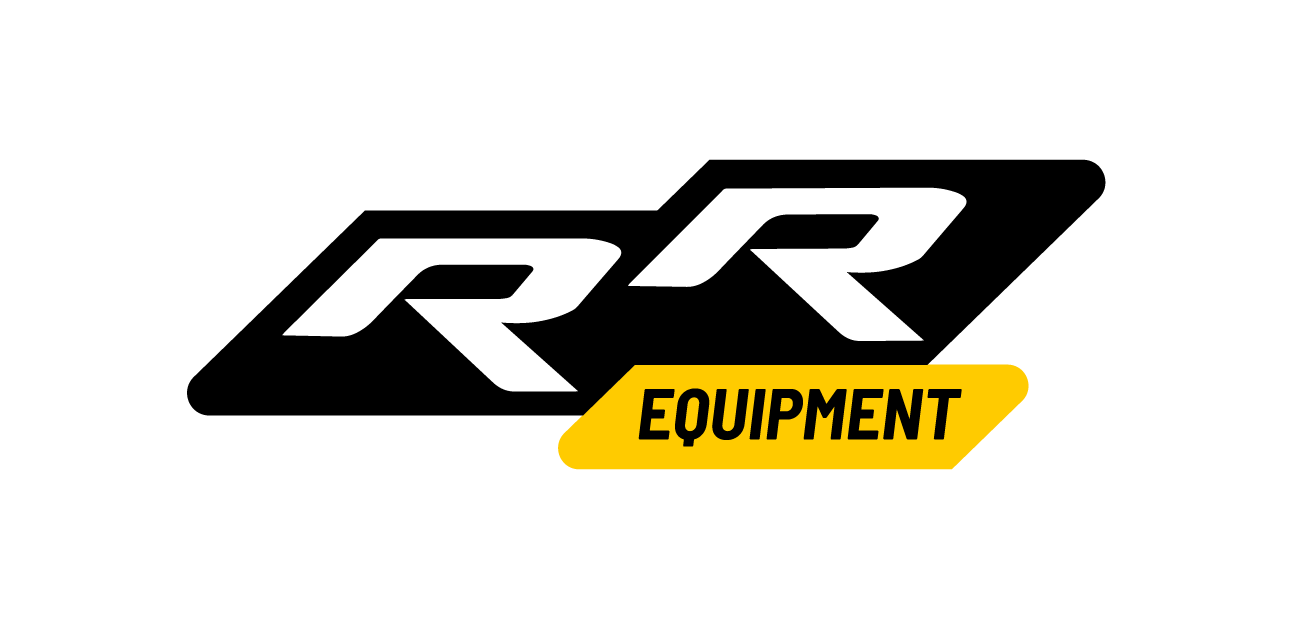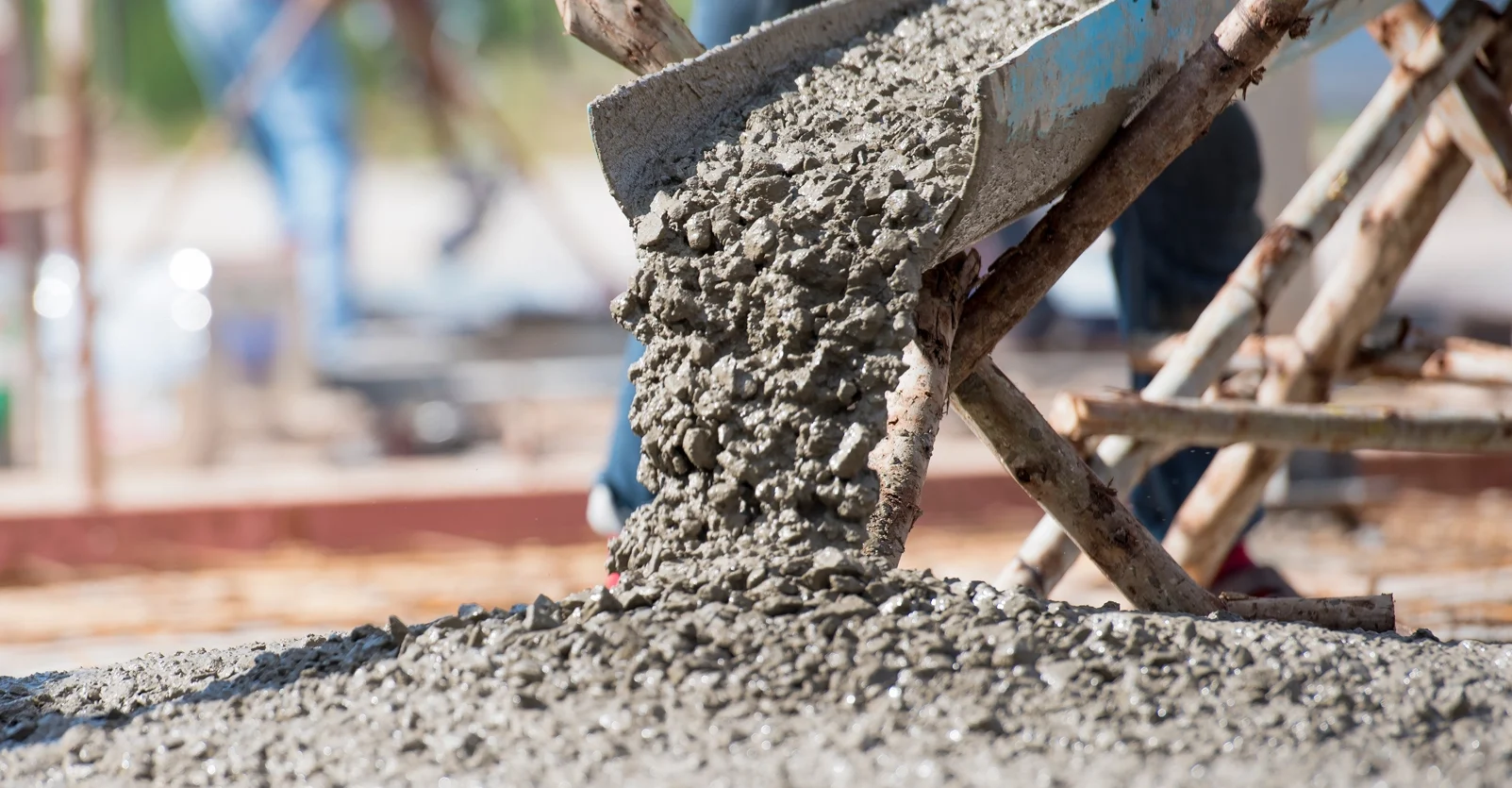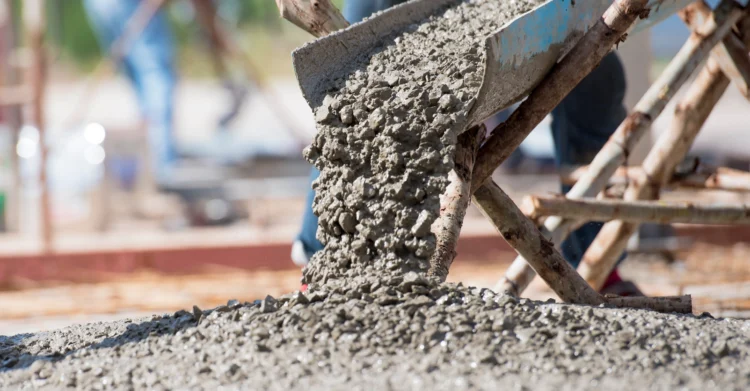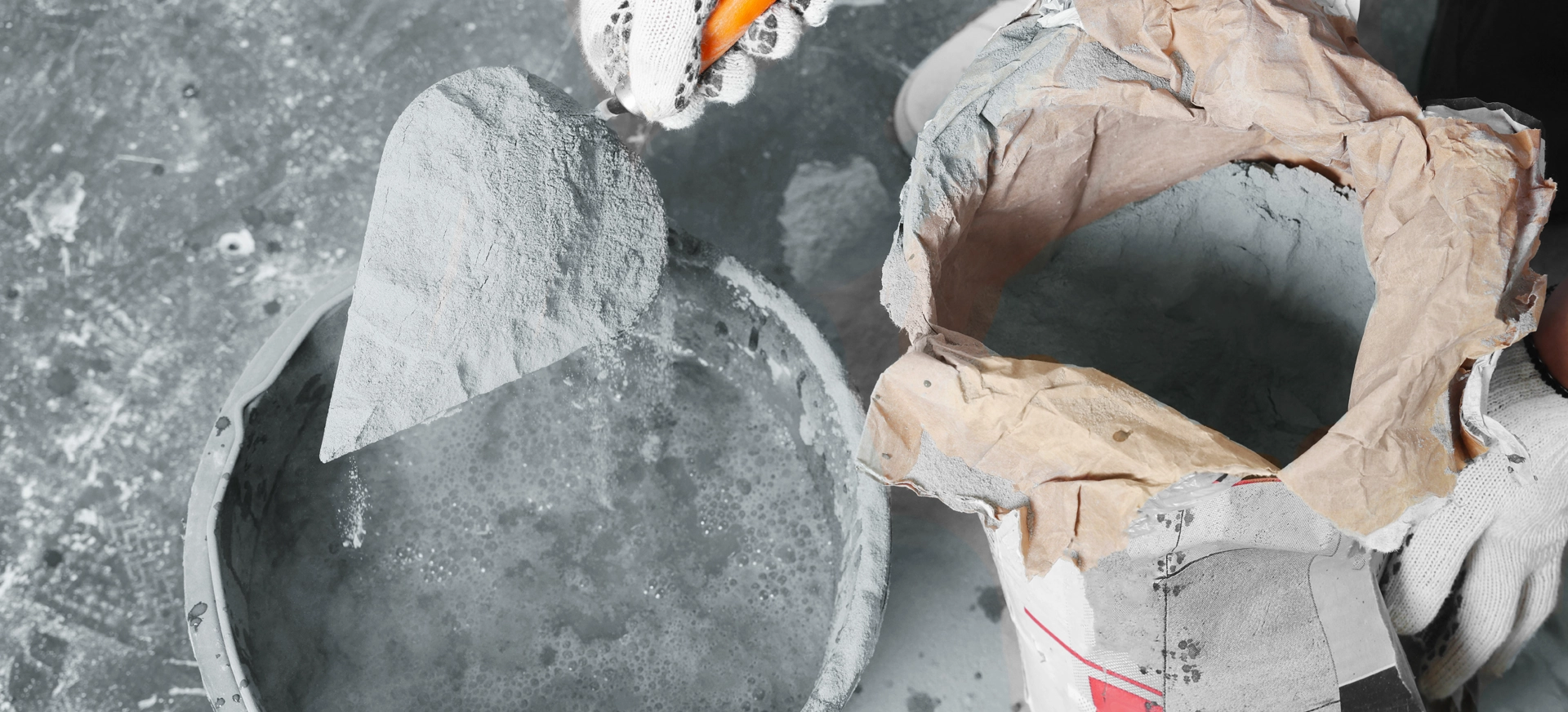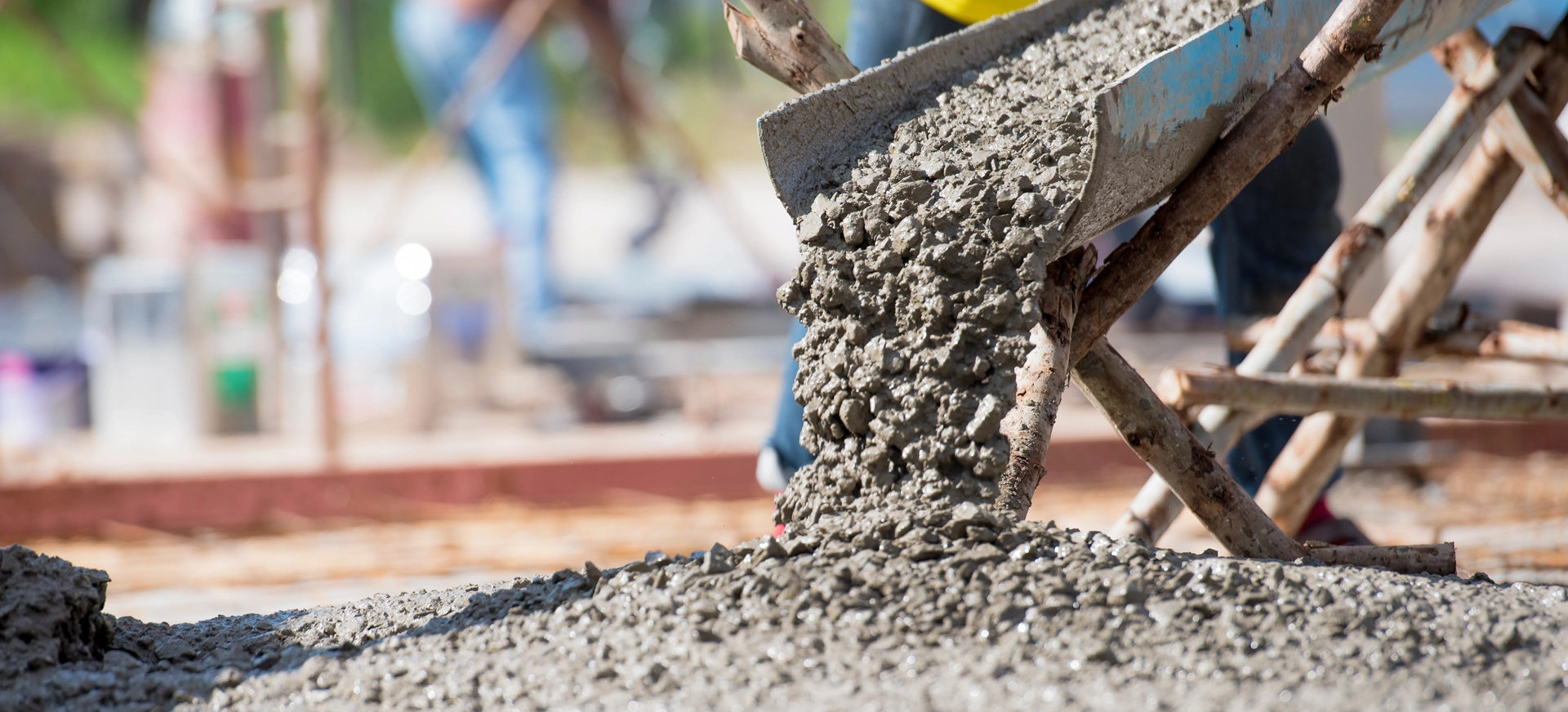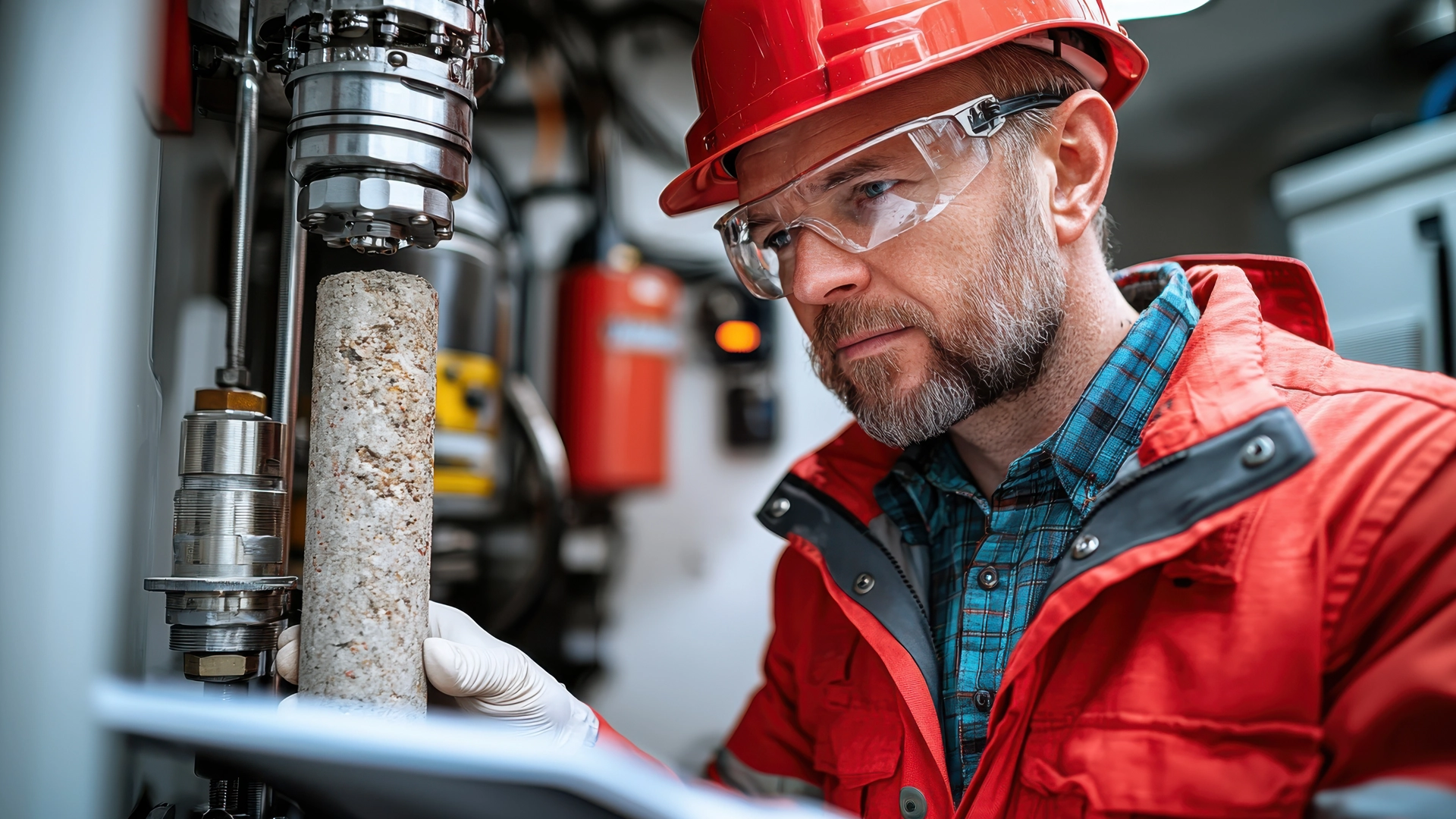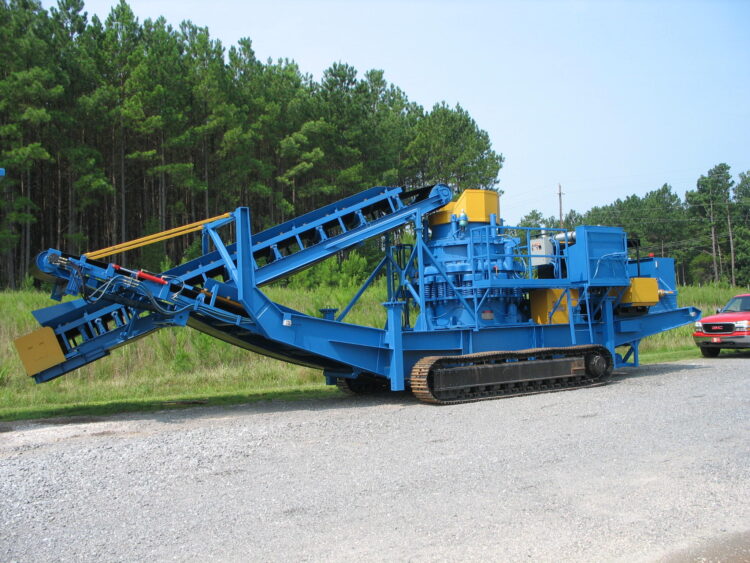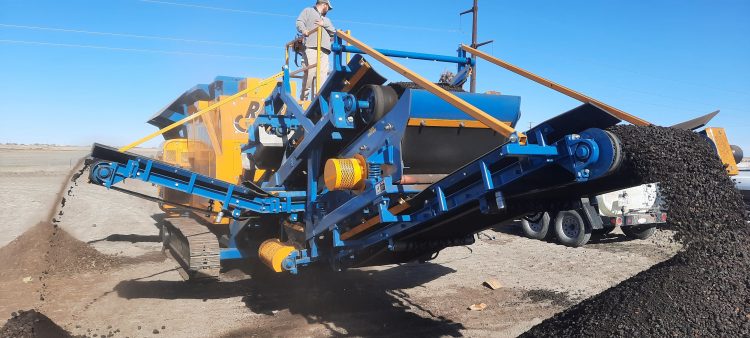In the construction world, it’s not uncommon to hear phrases like “cement truck” or “cement sidewalk.” But for industry professionals, especially aggregate producers and contractors, using “cement” and “concrete” interchangeably isn’t just a harmless habit. It’s a persistent misconception that can cause confusion in material specification, inflate costs, and impact equipment performance.
This blog post aims to clear up the confusion between cement and concrete once and for all, providing clarity for those who work with these materials every day. At RR Equipment (RRE), we’re more than just equipment manufacturers, we’re experienced material producers who understand the entire lifecycle of aggregate processing and its direct impact on concrete quality. This guide shares our expert perspective on the distinction between cement and concrete, the role of aggregates, and why precision at every stage matters.
What is Cement?
Cement is a fine, powdery substance, typically Portland cement, that serves as the binding agent in concrete. It’s an ingredient, not the final product.
How is Cement Made?
Cement is produced by heating a blend of limestone, clay, and other raw materials to extremely high temperatures in a kiln. This process forms clinker, which is then finely ground into the powder we recognize as cement. Though small in proportion, cement plays a big role. It chemically reacts with water to form the glue that binds aggregates together.
What is Concrete? The Aggregate-Reliant Building Material
Concrete is a composite material made of cement, water, and aggregates (like sand and gravel). While cement binds it all together, aggregates make up the majority, 60–75% of the total volume.
Concrete Composition: Aggregates Take Center Stage
Typical concrete contains:
- Cement (10–15%)
- Water
- Aggregates (60–75% or more)
This composition makes one thing clear: concrete is mostly aggregate. That’s why the quality of the aggregate, its size, shape, gradation, and cleanliness, is critical. At RRE, our crushers, screeners, and washing equipment ensure the aggregate meets spec before it ever hits the mixer.
Aggregates are divided into two types:
-
Fine Aggregates
- Definition: Particles smaller than 4.75 mm (retained on a No. 200 sieve).
- Common Materials:
- Natural Sand: River sand, pit sand.
- Manufactured Sand: Crushed stone sand, often produced as a byproduct of crushing.
- Purpose: Fills voids between coarse aggregates, improves workability, and helps in finishing concrete surfaces.
-
Coarse Aggregates
- Definition: Particles larger than 4.75 mm, typically up to 40 mm in diameter.
- Common Materials:
- Gravel: Rounded stones from riverbeds or natural deposits.
- Crushed Stone: Angular fragments from quarrying and crushing rock (like limestone, granite, or basalt).
- Recycled Concrete Aggregate (RCA): Crushed old concrete, reused in new mixes.
- Purpose: Provides bulk and strength to concrete, reduces shrinkage, and increases durability.
The Hydration Process: How Cement Binds Aggregates
When cement is mixed with water, it undergoes a chemical reaction called hydration, forming calcium-silicate-hydrate (CSH). This creates the strength and structure of hardened concrete over time, a process known as curing.
Cement vs. Concrete: Key Differences & Common Mistakes
It’s easy to see why the terms get mixed up, but understanding the difference is important for accurate material specification, cost control, and effective use of equipment.
The Key Differences
Cement and concrete are distinct materials, and while cement is a component of concrete, they cannot be used interchangeably. Let’s dive deeper into their differences:
- Cement is a fine, dry powder made primarily from limestone, clay, and other minerals. It is the binding agent in concrete. Cement is mixed with water to form a paste that hardens over time and binds aggregates together to form concrete.
- Concrete, on the other hand, is a composite material made up of three main ingredients: cement, water, and aggregates (sand, gravel, crushed stone, etc.). Concrete is the final product used in construction and is significantly stronger than cement alone due to the presence of aggregates and the hydration process.
In simple terms, cement is an ingredient, and concrete is the finished product. While cement is necessary to make concrete, concrete would not exist without its other key component – aggregate.
Common Industry Misconceptions
- “Cement truck” vs. “Concrete truck”
- Misconception: A “cement truck” is used to transport cement to the construction site.
- Reality: The correct term is “concrete truck” because these trucks are transporting ready-mix concrete, which is a mixture of cement, water, and aggregates. Cement trucks, if they exist, would be used to transport only cement powder—but such trucks are rare since cement is typically transported in bulk via other methods.
- “Cement sidewalk” vs. “Concrete sidewalk”
- Misconception: People often refer to sidewalks or driveways made of concrete as “cement sidewalks.”
- Reality: The correct term is “concrete sidewalk” because sidewalks are primarily made of concrete, which includes cement as a component but is much more than just cement.
- Overestimating Cement’s Role in Concrete
- Misconception: Some people may believe that cement is the primary determinant of concrete’s strength.
- Reality: While cement is important, the quality and composition of the aggregates—such as their size, shape, grading, and cleanliness, are equally, if not more, critical to the overall performance of the concrete. Aggregates make up 60–75% of the concrete’s total volume and play a major role in its strength, durability, and workability.
Why Accurate Terminology Matters
Using the correct terminology, cement for the binding agent and concrete for the composite material, has real-world consequences for several key aspects of the construction and aggregate production processes:
- Material Specification:
- Correctly identifying materials ensures that the right types and amounts of ingredients are used in concrete mixes. Misusing the terms can lead to specifying incorrect materials, which may affect the quality, durability, and performance of the concrete in the final construction product.
- Cost Control:
- Cement is often more expensive than aggregates, so being precise about material specifications helps control costs. Understanding the amount of cement needed for a specific concrete mix will help ensure that excess material is not ordered or wasted.
- Quality Control:
- For contractors and aggregate producers, the difference between cement and concrete is vital to ensuring that products meet required standards. For example, if a specification calls for “cement,” using concrete instead (or vice versa) can result in the wrong material being mixed, which might lead to poor structural integrity and failed inspections. Understanding the correct material helps professionals use equipment like crushers, screeners, and mixers properly, producing consistent and high-quality results.
- Equipment Efficiency:
- Processing Equipment: Aggregates, being the bulk of concrete, require careful processing. The quality of the aggregate—shaped and sized properly through crushing and screening—has a direct impact on concrete performance. Improperly specifying or mixing cement and concrete could lead to ineffective use of equipment, inefficiencies, and additional costs in the long run.
How Accurate Terminology Avoids Confusion in Equipment Use
At RR Equipment (RRE), we stress the importance of clear, accurate terminology when it comes to cement and concrete, as it directly impacts how our equipment is used. For example, using the right specification for concrete aggregate in crushing, screening, and washing processes ensures that each aggregate type (fine or coarse) is properly handled, resulting in better quality concrete.
- When producing fine aggregates (sand), it’s important to maintain precise control over gradation and cleanliness, achievable with the right screening equipment.
- For coarse aggregates, ensuring proper crushing and shape is key to providing structural integrity in the final concrete product.
- Washing equipment is critical to ensure that contaminants are removed from aggregates, which can weaken concrete strength.
In essence, when you use the right terminology, you ensure the materials are correctly specified, and the right equipment is used for the job, avoiding costly mistakes in the production process.
Strength, Durability, and the Aggregate Role
Concrete’s strength and durability don’t just come from cement, they depend heavily on aggregate quality. Well-graded, clean, and properly crushed aggregates provide better workability, resistance, and long-term performance. Remember: cement is in concrete, but they’re not the same.
Aggregates: The Heart of Quality Concrete
Concrete may start with cement and water, but it’s the aggregates that give it strength, volume, and durability. In fact, aggregates typically make up over 60–75% of the total concrete mix. That’s why aggregate quality isn’t just important – it’s foundational.
Why Aggregate Specs Dictate Concrete Performance
The performance of concrete hinges on the physical properties of the aggregates used. Poor-quality or out-of-spec aggregates can lead to weak concrete, surface defects, cracking, and even structural failure. Conversely, well-graded, clean, and durable aggregates result in concrete that is strong, workable, and long-lasting. Let’s break down the key aggregate properties that influence concrete quality—and how RRE’s equipment helps producers consistently hit the mark.
Gradation (Size Distribution)
- Why It Matters: The right blend of fine and coarse particles ensures optimal density, workability, and minimal voids in the concrete mix.
- How RRE Helps: Precision screening with concrete screener equipment ensures consistent gradation across batches. RRE’s screeners separate material accurately, giving you better control over the final mix and reducing the risk of segregation or bleeding in poured concrete.
Shape & Texture
- Why It Matters: Angular, rough-textured aggregates bond better with cement paste, contributing to higher strength and reduced slippage.
- How RRE Helps: The Rebel Crusher and other crushing solutions from RRE are engineered to produce aggregates with the angular shape and surface roughness ideal for concrete performance. These crushers can be tuned to achieve the ideal fracture pattern for your application.
Cleanliness
- Why It Matters: Dirt, clay, and organic materials can interfere with the cement paste’s ability to bond with aggregates, weakening the concrete.
- How RRE Helps: RRE’s high-efficiency wash equipment removes deleterious materials from aggregates, ensuring that every load meets spec. Clean aggregates lead to stronger bonds, longer service life, and fewer callbacks or defects.
Durability & Soundness
- Why It Matters: Aggregates must resist weathering, freeze-thaw cycles, and chemical attack, especially in exterior or infrastructure applications.
- How RRE Helps: By producing aggregates with consistent hardness and soundness, RRE’s crushing and screening systems support higher-quality concrete capable of withstanding extreme conditions over time.
Sourcing: Quarrying vs. Recycling (RCA)
Natural aggregates come from quarries, while recycled concrete aggregate (RCA) is made from crushed concrete debris. RRE equipment is designed to handle both, helping you create sustainable, spec-grade RCA using our robust crushers and screeners.
Types of Concrete & Their Demanding Aggregate Needs
Different types of concrete require different aggregate characteristics.
How Mix Designs Drive Aggregate Selection
- Normal concrete: Needs well-graded, general-purpose aggregates.
- High-strength concrete: Requires low-absorption, durable aggregates.
- Pervious concrete: Demands uniformly sized, coarse aggregates for drainage.
- Lightweight concrete: Uses special aggregates like expanded shale.
At RRE, we understand these specs and our equipment helps you meet them with precision.
Applications: Where Quality Aggregates Meet Concrete Demand
From highways to high-rises, every successful concrete application starts with the right aggregate, processed to spec and delivered consistently. At RRE Equipment, we know that quality concrete doesn’t happen by accident. It’s the result of precision crushing, screening, and washing. Below are key application areas where our equipment plays a critical role in producing the materials that fuel the modern built environment.
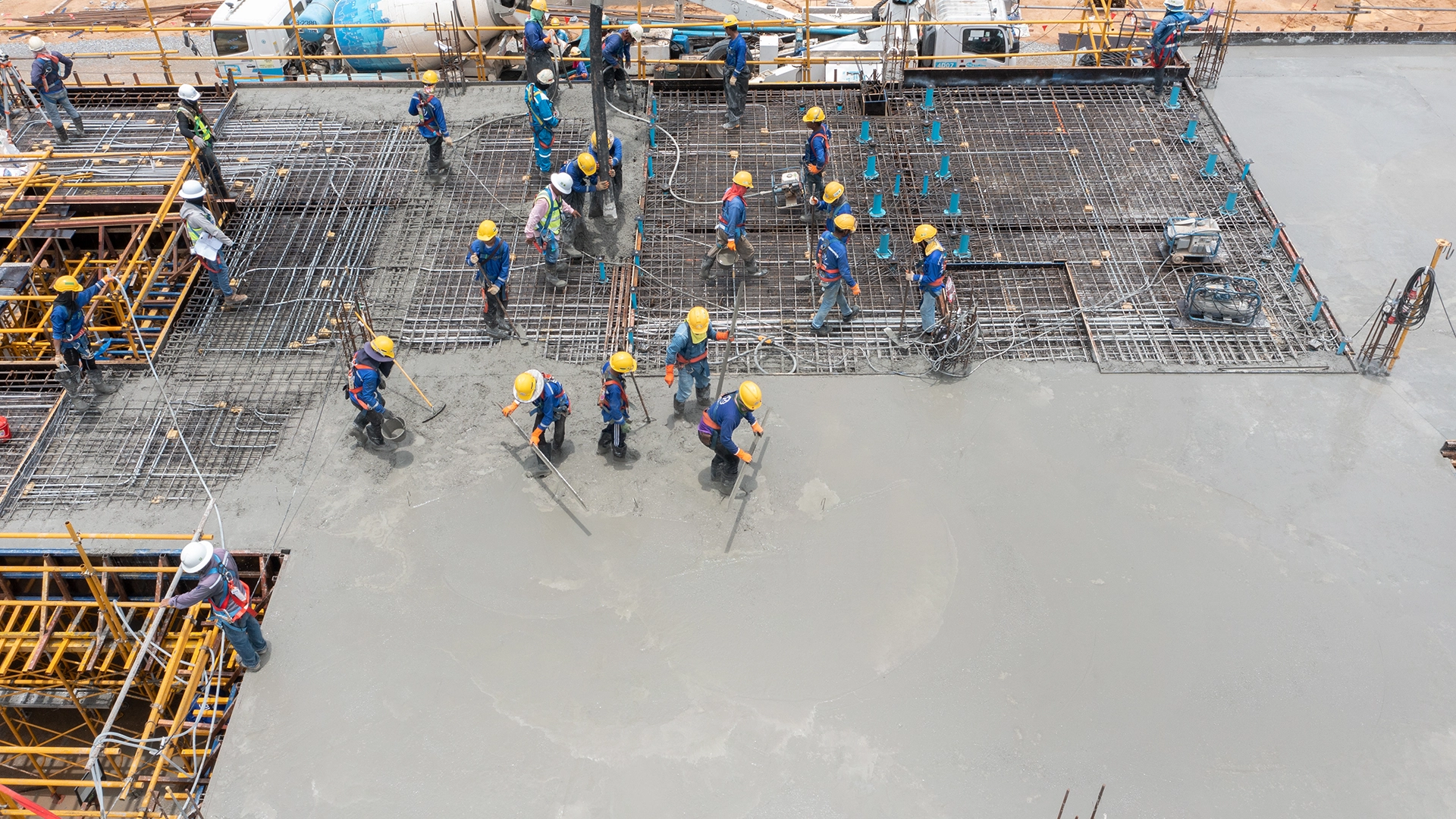
-
Road Construction & Paving
- Use Case: Highways, interstates, city streets, airport runways
- Aggregate Requirements:
- Well-graded, durable coarse aggregates to resist rutting and load stress
- Clean, angular fines for tight packing and smooth surface finish
- Consistent gradation for long-term durability and reduced maintenance
- How RRE Delivers: RRE’s Rebel Crusher and portable screening systems give paving contractors the ability to produce DOT-spec road base and concrete-ready aggregates on-site or at scale. Our track-mounted equipment is ideal for mobile applications where time, consistency, and cost-efficiency are critical.
-
Foundations & Structural Concrete
- Use Case: Building footings, slabs, bridges, parking structures
- Aggregate Requirements:
- High-strength coarse aggregates with excellent bonding characteristics
- Minimal fines and organic content to avoid weakening the mix
- Uniform particle shape for better workability and compaction
- How RRE Delivers: RRE’s crushing and washing systems are engineered to meet structural concrete standards, ensuring clean, angular aggregates free of contaminants. Whether you’re building a residential foundation or pouring bridge piers, our equipment ensures that the concrete starts with the strongest possible base.
-
Precast Concrete
- Use Case: Pipes, panels, barriers, utility vaults, modular components
- Aggregate Requirements:
- Extremely consistent gradation and cleanliness across batches
- Specific sizing to meet mold flow and compaction requirements
- Minimal variability to ensure dimensional accuracy
- How RRE Delivers: Precast producers rely on tight material control and RRE delivers with precision screeners and reliable wash equipment that consistently produce aggregates to spec. For operations that need repeatable results day after day, our systems offer durability, automation compatibility, and ease of maintenance.
-
Recycled Aggregate Applications
- Use Case: Sustainable construction, LEED projects, demolition waste recovery
- Aggregate Requirements:
- Properly crushed and sized reclaimed concrete material (RCA)
- Removal of rebar, fines, wood, and other contaminants
- Strong enough to meet structural and non-structural reuse standards
- How RRE Delivers: RRE leads in recycling-ready crushing and screening equipment, purpose-built for processing concrete demolition waste. The Rebel Crusher excels at separating rebar and producing clean RCA on-site, while our screeners and washers refine the final product. Whether you’re working with municipalities, DOTs, or green builders, RRE helps turn waste into value, safely, efficiently, and profitably.
Real-World Results, Backed by RRE Equipment
At RRE Equipment, we provide the tools that contractors, producers, and recyclers trust to meet the demands of every concrete application. From crushers and screeners to wash plants and conveyors, we help you produce aggregates that go beyond spec, so your concrete performs when and where it matters most.
Wrapping Up – Concrete vs Cement: Get the Materials Right
To recap: cement is a binding agent, while concrete is a composite material that relies heavily on aggregates. Misusing the terms is more than semantics, as it can lead to real-world problems in procurement, mixing, and equipment usage. At RRE, we’re proud to combine hands-on aggregate production knowledge with high-performance processing equipment. Because when it comes to concrete, quality begins with the right materials and the right tools.
Start Improving Your Business Today
Crushing concrete or producing aggregates for concrete? RRE’s crushing solutions help you meet spec and exceed expectations. Explore our full lineup of crushers, screeners, and washing equipment. Contact us today to optimize your operation.
